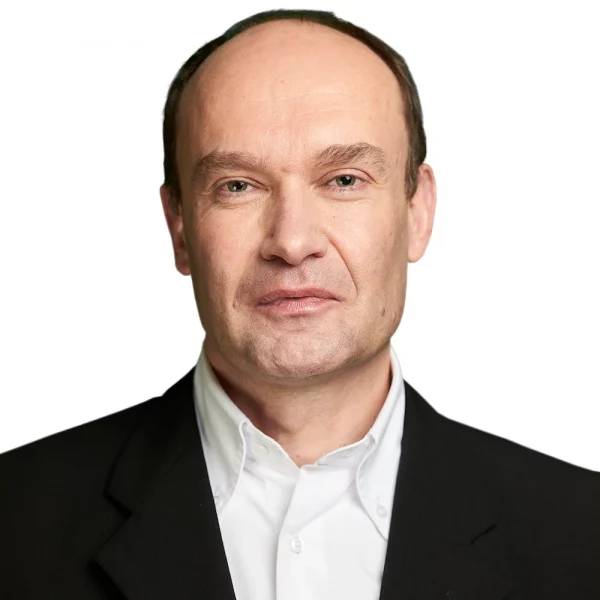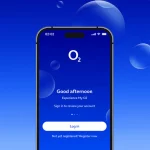Nokia Interview – 6G to Focus on Efficiency More than Mobile Broadband Speed

4. One of the reasons why new mobile technologies often struggle to fully realise their potential (i.e. that gap between hype and delivery) has been the pursuit of ever higher radio frequencies, such as the mmW bands with 5G (e.g. 24-40GHz) and potentially THz with 6G. This is all very well, but for a mobile network, there’s often been a real-world gap between such capabilities and the economic realities of delivering scale mobile deployments.
In other words, to get the most out of higher mobile frequencies you typically have to build a much more dense and complex network in order to overcome the limitations of signal degradation over distance, which only really makes much sense in very dense / busy urban areas. This problem only gets harder as the frequencies get higher, which makes it more difficult for mobile operators to harness them and upgrade.
The result is that major mobile operators often end up, for the most part, sticking to their sweet spots in the sub-6GHz (mid and low) mobile spectrum bands. What can 6G feasibly do to address this, and will it be bringing any changes that might actually help mobile operators to reduce their network deployment costs?
Advertisement
Peter Merz said:
Operators certainly don’t want another wave of costly overbuilds. That’s why 6G is being designed very differently from the start.
Instead of relying on one band, 6G is about aggregation and sharing across low, mid, and higher frequencies. This allows operators to extract more value from their existing sub-6 GHz “sweet spots” while still introducing upper mid bands in targeted scenarios, such as dense urban zones or specialised industrial use cases.
6G architecture will also evolve from today’s cloud-native 5G core and reuse existing macro infrastructure, to ensure operators can introduce new capabilities modularly and protect their past investments.
By embedding AI and machine learning into every layer, 6G will optimise radio performance in real time. That means leaner, scalable designs that avoid over-engineering, smarter radios and simpler rollouts.
In short, 6G is not about blanketing entire countries with ultra-high frequencies. It’s about making the whole spectrum work faster, smarter, and greener — reducing total cost of ownership while still enabling headline-grabbing capabilities like ultra-fast short-range links.
5. Since I’ve already mentioned complementary Wi-Fi technology once, then I’d like to do so again by asking whether Nokia shares the view of those who would like to see a grand unification between Mobile and WiFi standards into a single combined standard. What are your thoughts on this?
Peter Merz said:
Wi-Fi and mobile have always evolved on parallel tracks because they serve different purposes, and that diversity has been part of their strength. Mobile networks provide wide-area coverage, mobility, and guaranteed quality of service, while Wi-Fi delivers cost-effective local connectivity in homes, enterprises, and hotspots.
That said, we absolutely see the value in making the two worlds work more seamlessly together. From the customer’s perspective, what matters is that devices connect simply and securely, whether through Wi-Fi or mobile. With 5G (and even more so with 6G) we’re building tight integration and handover between technologies, so users experience a single, coherent fabric of connectivity. AI-native design will ensure seamless optimization across both mobile and Wi-Fi, choosing the most efficient path automatically.
AI-native 6G networks should also be able to optimize traffic across both licensed and unlicensed spectrum, ensuring the most efficient and reliable path for every application.
Finally, we’re engaged in standards bodies that work across both domains, and the trend is towards greater harmonization and interoperability, not necessarily a single “grand standard.”
In short: we don’t see a full unification as realistic or even desirable — the ecosystems have different innovation cycles and governance. But we do see 6G as the glue that will make Wi-Fi and mobile work together more seamlessly than ever, delivering one reliable connectivity experience for the end user.
6. Switching to politics and regulation for a moment. Are there any particular changes that you think the UK government or regulator, Ofcom, could make in order to better foster and support the wide-scale deployment of 6G mobile technology in the next few years?
Peter Merz said:
Governments and regulators have a vital role to play in ensuring that 6G can be deployed at scale in a way that benefits society and the economy. Europe’s future economic competitiveness, technology leadership and sovereignty depend on fast, reliable and secure digital connectivity. For the UK, a few priorities stand out:
- 6G will depend on access to a mix of low, mid, and upper mid bands. What operators need is timely clarity on spectrum roadmaps and global harmonization, so they can plan investments with confidence. Ofcom’s work here will be central.
- Funding and policy support for testbeds, R&D, and early trials will help the UK build an ecosystem of universities, start-ups, and operators that can drive home-grown innovation around 6G use cases.
- The cost of densification and rural coverage is always a challenge. Network densification is an option to the extent that is operationally and financially viable. Policies that do not tightly link spectrum acquisition with strict geographical coverage obligations but rather enable shared infrastructure, streamlined planning, and investment incentives can reduce barriers and speed up rollout.
- The UK’s policy frameworks should align with the industry’s push for greener networks, recognising that lower energy per bit, circularity, reuse of existing macrocellular network site grids, availability of sufficient (contiguous) spectrum bandwidth, macrocellular deployment enablement, and longer equipment lifecycles are not optional extras, but fundamental to 6G.
- Finally, ensuring that open, AI-native networks are built on secure and trusted foundations will be key. This requires clear and proportionate regulatory frameworks that balance innovation with resilience.
Here, Nokia is already co-developing an AI testing framework with partners such as Qualcomm and Keysight to validate AI/ML behaviour post-deployment. This ensures transparency, explainability, and predictability because in 6G, transparency isn’t optional, it’s infrastructure.
From our perspective, 6G is not just about faster connections — it’s about building sustainable, inclusive, and trusted infrastructure for the next decades.
7. OpenRAN seems to have been growing in popularity and adoption, particularly in the UK (e.g. Vodafone), over the past few years. In the past this might have been seen as a competitive alternative to the established dominance of suppliers like Nokia or Ericsson. But we note that Nokia was the first major global RAN vendor to join the OpenRAN Policy Coalition and has been active in related standards development etc. What sort of future do you see for OpenRAN today, particularly in terms of future 6G services and advanced 5G?
Peter Merz said:
We’ve always seen OpenRAN not as a threat, but as an opportunity to broaden innovation and choice for operators. That’s why Nokia was the first large vendor to actively embrace the movement joining the Policy Coalition early, contributing to standards, and ensuring openness is balanced with performance, security, and reliability.
Looking ahead:
- For 5G today: OpenRAN is already maturing, with deployments in live networks, including the UK. Operators value the flexibility and vendor diversity it brings, and Nokia supports that with our anyRAN approach, which allows customers to deploy cloud-based RAN functions across dedicated or general-purpose platforms.
- For 6G tomorrow: The principles of OpenRAN – openness, interoperability, and software-driven innovation – align well with how we’re designing 6G. By embedding AI-native automation, modular architectures, and standardised APIs, 6G will build on OpenRAN’s ethos, making it easier for operators to integrate new capabilities without vendor lock-in. This modularity ensures 6G remains future-proof by nature.
- Balancing openness with trust: What’s crucial is that openness doesn’t come at the expense of security, resilience, or performance. Nokia’s role is to help shape global standards so that OpenRAN evolves in a way that is trusted, scalable, and future-proof for both 5G and 6G.
- With strong leadership of Nokia in recent 3GPP plenary discussions, immediate standoff in 3GPP around ORAN. A fronthaul referencing has been defused, and the 6G architecture studies can commence.
So, our view is clear: OpenRAN is here to stay, and its values will be even more central as we move into the 6G era. The real opportunity is to harness openness responsibly, ensuring operators can innovate with confidence.
8. Finally, is there anything else you might want to add?
Advertisement
Peter Merz said:
If there’s one final thought to share, it’s that Nokia’s vision for 6G is not about chasing hype or creating a revolution for its own sake.
Instead, it’s about building smarter, more sustainable networks that are ready for the future. By embedding AI from the start, embracing modular and scalable designs, and enabling continuous learning, we’re creating networks that adapt, optimize, and essentially manage themselves. Add to that our focus on trust, transparency, and coexistence with existing infrastructure, and it becomes clear that 6G isn’t just about faster speeds, it’s about building a foundation for innovation, efficiency, and reliability that will transform connectivity for decades to come.
Ultimately, 6G is not just about faster speeds or futuristic capabilities, it’s about creating a sustainable, inclusive, and trusted foundation for the decades ahead. At Nokia, we’re excited to be at the forefront of this journey.
We’ll finish by taking a moment to thank Peter for agreeing to be interviewed and for providing such useful insights from the technology side of the market, which often stays in the background of consumer services.
Mark is a professional technology writer, IT consultant and computer engineer from Dorset (England), he also founded ISPreview in 1999 and enjoys analysing the latest telecoms and broadband developments. Find me on X (Twitter), Mastodon, Facebook, BlueSky, Threads.net and Linkedin.
« O2 UK Hit Customer with £1,000 Bill After Losing their Mobile Number
Advertisement
Leave a Reply Cancel reply
Privacy Notice: Please note that news comments are anonymous, which means that we do NOT require you to enter any real personal details to post a message and display names can be almost anything you like (provided they do not contain offensive language or impersonate a real person�s legal name). By clicking to submit a post you agree to storing your entries for comment content, display name, IP and email in our database, for as long as the post remains live.
Only the submitted name and comment will be displayed in public, while the rest will be kept private (we will never share this outside of ISPreview, regardless of whether the data is real or fake). This comment system uses submitted IP, email and website address data to spot abuse and spammers. All data is transferred via an encrypted (https secure) session.





















































An interesting article.
I doubt if half the time most people don’t even realise what G their phones are connected to. Coverage and reliability is the most important thing.